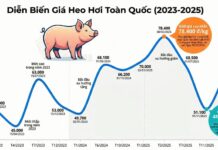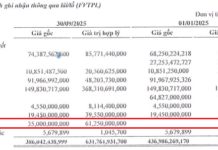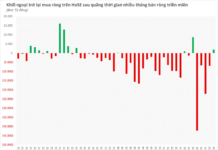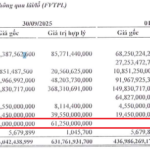New information from the State Bank of Vietnam shows that by February 29, 2024, credit in the economy decreased by 0.72% compared to the end of 2023. However, the rate of decrease in February slowed down (-0.05%) compared to January (-0.6%). The State Bank of Vietnam stated that the current decrease applies to most economic sectors and industries. There are 2 sectors that have shown growth in the first 2 months of the year, namely credit for the real estate sector, which increased by 0.23% compared to the end of 2023, and credit for the securities sector, which increased by 2.56% compared to the end of 2023.
At the Monetary Policy Implementation Conference chaired by the Prime Minister on the morning of March 14, the Deputy Governor of the State Bank of Vietnam stated that the global economy is experiencing unpredictable developments, with inflation pressure and high global interest rates, the value of the US dollar and global gold prices are complex; the USD-VND interest rate difference,… are negative factors affecting the stability of the VND/USD exchange rate domestically, especially as the VND interest rates are expected to continue to decline.
Credit in the first 2 months of the year has experienced negative growth due to various reasons.
Regarding objective reasons: According to seasonal factors, the demand for credit capital usually increases at the end of the year and before the Lunar New Year, leading to slow growth in credit scale in the first 2 months of the year.
The demand and capital absorption capacity of the economy is low: Many businesses have narrowed down or ceased operations due to inflation pressure and rising material prices; lack of orders; high input factors and production costs, resulting in no demand for borrowing capital; individuals increase their reserves and reduce borrowing for spending; real estate credit accounts for about 21% of total credit, and fluctuations in real estate credit often lead to fluctuations in the overall credit system.
Some customer groups have the demand for credit but do not meet the borrowing conditions, especially small and medium-sized enterprises with small capital scale, limited capacity, lack of feasible business plans, and solutions to enhance access to credit through credit guarantee funds, Small and medium-sized enterprise development funds,… have not achieved significant results.
In addition, the difficulties in implementing some credit programs and policies, such as the 120,000 billion dong program, the legal regulations related to social housing projects (land fund, process, buying and selling procedures, valuation…) still have many obstacles; the number of renovation and reconstruction projects for apartments is very small; some conditions for home buyers are no longer suitable; for consumer loan packages, the income of workers decreases in the context of high unemployment, job loss, resulting in a decrease in consumer credit demand; workers and employees lack clear information while grassroots trade unions and enterprises have not really paid attention to communication and promotion of loan packages.
The ability to mobilize medium and long-term capital of credit institutions is still low compared to the medium and long-term capital needs of the economy.

Deputy Governor of the State Bank of Vietnam, Dao Minh Tu, said that some banks are still cautious in granting loans due to the increase in bad debts. Photo by VGP/Nhat Bac
Regarding subjective reasons, the State Bank of Vietnam believes that some banks are still cautious in granting loans due to the increase in bad debts. Some old debts with high interest rates have been slowly adjusted down to support businesses and individuals in borrowing capital.
Some banks’ loan application procedures are still slow to improve, especially the loan approval time is long, the asset valuation and collateral determination are too cautious.
The implementation of the collateral mechanism is still inflexible, mainly relying on collateral assets, especially in the current context of the real estate market stagnation. The lack of connection, interaction, sharing, and cooperation between customers and banks in direct exchange to find solutions to overcome capital difficulties.
Mobilization of capital through stocks, bonds, FDI is increasing slowly, the difficulties in the bond market, real estate market have not been fundamentally resolved… Resulting in the continuous concentration of capital resources for credit from banks, the Credit/GDP ratio is high (about 133% at the end of 2023, increasing compared to about 125% at the end of 2022), implying potential risks to financial and monetary system stability.




































